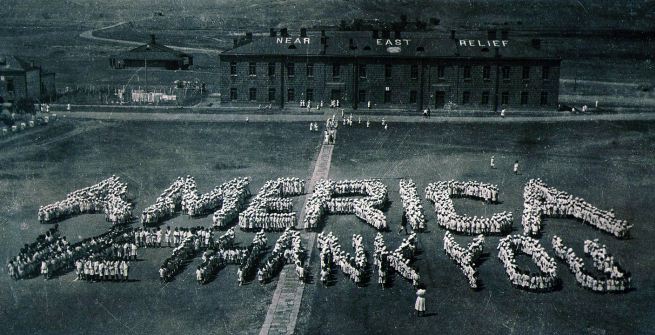One hundred years ago, on April 24th, 1915, the Ottoman Turkish government enacted a systematic policy to annihilate its Armenian population. From 1915-1930, over a million and a half souls perished. They were sent on marches across the interior provinces of Turkey and into the Syrian desert without food or water. Many of those who survived the death marches became the sole survivors of their families. The lucky ones ended up in orphanages in Lebanon, Syria, and elsewhere.
My two paternal grandparents were two of those orphans. My grandmother’s entire family, save for her sister, were slaughtered. My grandfather lost all of his family members. The two orphans were saved by missionaries funded by the Near East Relief (NER), which brought them to Lebanon, where they ended up in the same orphanage. The two orphans married as soon as they came of age.
"They Will Not Perish: The Story of Near East Relief," a traveling exhibit curated by the Near East Foundation, which will be on display in the Lower Level I Atrium of Central Library from March 7 through April 30, 2015, recognizes the outpouring of generosity by the American people in the aftermath of the Armenian Genocide (1915-1930). The Near East Relief Organization (NER) was instrumental in rescuing and providing assistance to hundreds of thousands of men, women, and children displaced by Genocide. Established by Congressional mandate and supported by three consecutive U.S. Presidents, the NER would serve as a model for many other American and international humanitarian efforts, including the US Peace Corps and USAID. President Calvin Coolidge urged Americans to eat something simple on what was called "Golden Rule Sunday"s in order to raise funds for the NER. The campaign was fully embraced by the American people.
The NER raised the equivalent of over $2.7 billion in today’s U.S. dollars to save Armenians, Assyrians, Greeks, and other minorities in the Near East region during and after the Armenian Genocide. Now known as the Near East Foundation, the organization continues its work in countries around the globe.
Sadly, my grandparents’ narrative is not unique: Countless fellow Armenians have similar stories. We either grew up hearing them or, in my case, the feelings were still so raw that my grandmother couldn’t put them into words. She kept it to herself and found solace in needlework, and the Bible, and hardly ever spoke of the horrors she witnessed during her childhood. My grandfather died while I was very young, so, unfortunately, I have no memories of him.
I am a direct descendant of those rescued by the NER.
The NER was able to galvanize an entire nation to help aid the refugees of the Armenian Genocide. To celebrate the generosity of the American people and the spirit that kept alive hundreds of thousands of refugees—including my dear and departed grandparents—this exhibit simply says, America, We Thank You.
